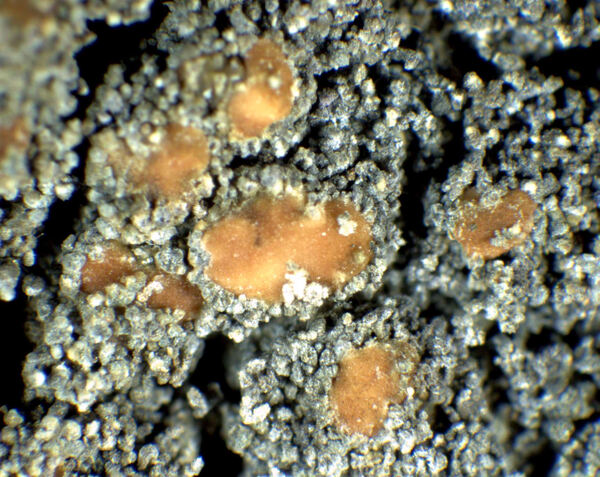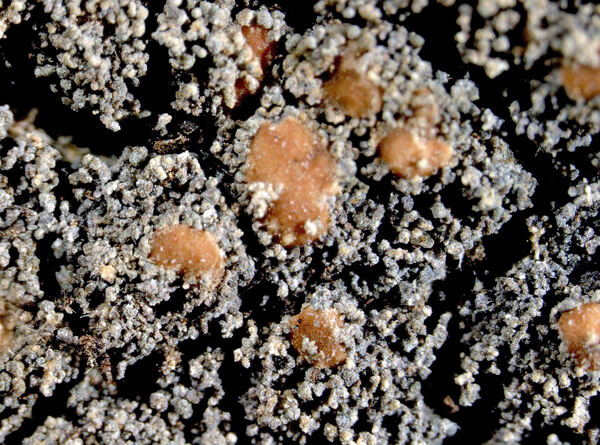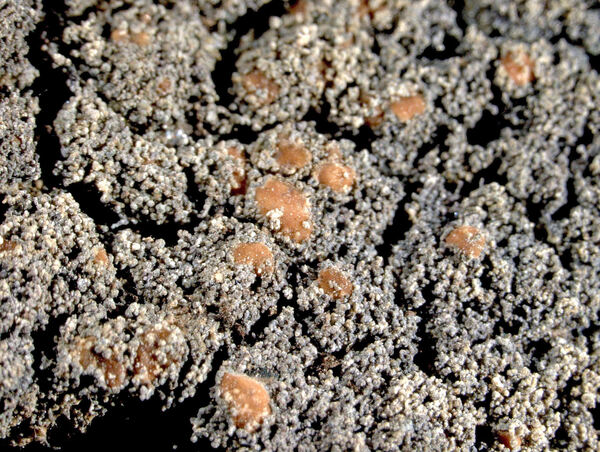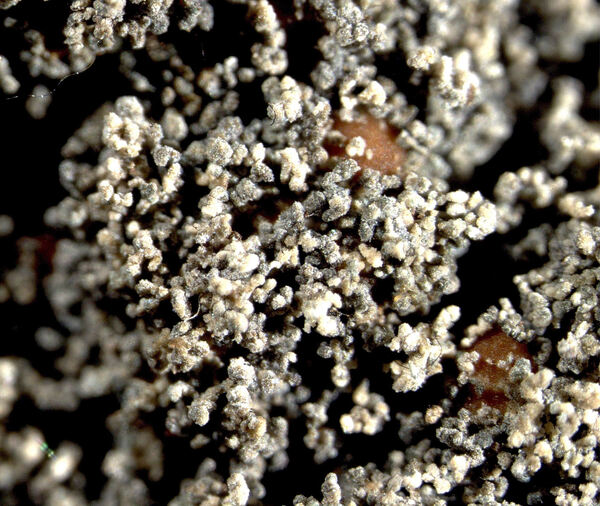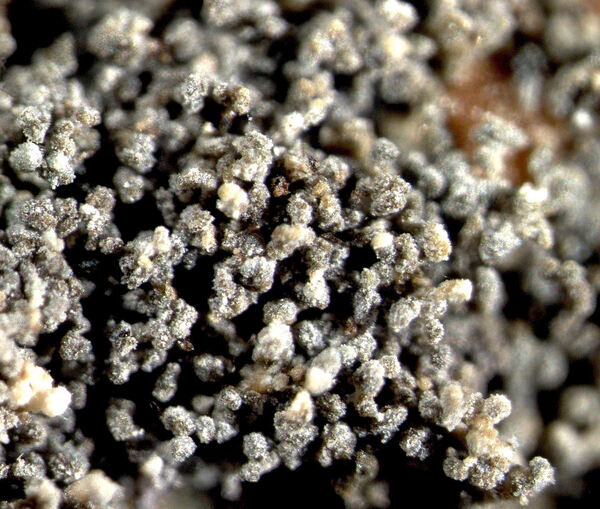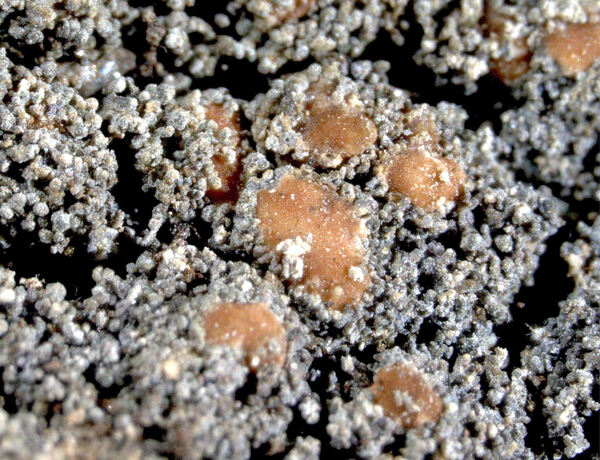Fuscopannaria nebulosa (Hoffm.) E. Tripp & Lendemer
Systematic Botany 44, 4: 972, 2018.. Basionym: Patellaria nebulosa Hoffm. - Descr. Adumb. Plant. Lich. 2(3): 55, 1794.
Synonyms: Biatora triptophylla var. coronata (Hoffm.) Rabenh.; Lecanora coronata (Hoffm.) Röhl.; Lepidoma brunneum var. coronatum (Hoffm.) Bagl.; Moelleropsis nebulosa (Hoffm.) Gyeln.; Pannaria brunnea var. coronata (Hoffm.) A. Massal.; Pannaria nebulosa (Hoffm.) Nyl.; Trachyderma nebulosum (Hoffm.) Trevis.
Distribution: N - Ven, TAA, Lomb, Piem, VA (Piervittori & Isocrono 1999), Emil (Fariselli & al. 2020), Lig. C - Tosc, Sar. S - Camp (Aprile & al. 2003b), Bas (Puntillo & al. 2009, 2012), Cal (Puntillo 1995, 1996, Puntillo & Puntillo 2004), Si (Ottonello & al. 2011).
Description: Thallus crustose-leprose, consisting of coarse, 50-150 µm thick, crowded granules often covering large surfaces, sometimes irregularly cracked when well-developed, pale blue-grey to blue-black. Granules containing clusters of Nostoc cells, partially covered in short-celled hyphae forming a primitive cortex. Apothecia lecanorine when young, then appearing biatorine, 0.3-1.6 mm across, sessile or sunken inbetween the granules, with a flat to convex, reddish brown to brown disc, a thin proper margin, and a soon excluded thalline margin often covered in granules. Proper exciple paraplectenchymatous, to 100 µm wide, of radiating hyphae; hymenium colourless, up to 100 µm high, hemiamyloid I+ blue-green turning reddish; paraphyses simple, not strongly coherent (well-visible in water), the apical cells hardly swollen, with an external brown pigment; hypothecium pale brown, of intricately interwoven hyphae. Asci 8-spored, subcylindrical to clavate, with a I+ blue tholus and an internal, more intensely I+ blue apical plug. Ascospores 1-celled, hyaline, ellipsoid, smooth-walled, sometimes thinned at one end, 14.5-22 x 6-8 µm, 2.6-2.8 times as long as wide. Photobiont cyanobacterial (Nostoc, the cells in short clusters). Spot tests: thallus K-, C-, KC-, P-, UV-. Chemistry: without lichen substances. Note: a mild-temperate early coloniser of clay-sandy soil, especially earth banks along unpaved roads, with optimum in humid areas with siliceous substrata; most frequent in Tyrrhenian Italy, from the lowlands (in very humid areas) to the mountains. See also comment on the genus.
Growth form: Crustose
Substrata: rocks, soil, terricolous mosses, and plant debris
Photobiont: cyanobacteria, filamentous (e.g. Nostoc, Scytonema)
Reproductive strategy: mainly sexual
Most common in areas with a humid-warm climate (e.g. most of Tyrrenian Italy)
Pioneer species
Commonnes-rarity: (info)
Alpine belt: absent
Subalpine belt: extremely rare
Oromediterranean belt: absent
Montane belt: very rare
Submediterranean belt: absent
Padanian area: absent
Humid submediterranean belt: rare
Humid mediterranean belt: absent
Dry mediterranean belt: absent

Predictive model
Herbarium samples
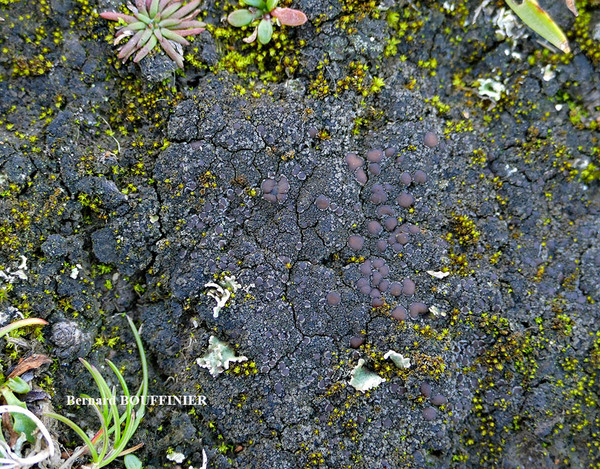
Bernard Bouffinier - Source: http://www.lichensmaritimes.org/index.php?task=fiche&lichen=125&lang=en
France, Pointe de Pen-Hir

Bernard Bouffinier - Source: http://www.lichensmaritimes.org/index.php?task=fiche&lichen=125&lang=en
France, Pointe de Pen-Hir

Bernard Bouffinier - Source: http://www.lichensmaritimes.org/index.php?task=fiche&lichen=125&lang=en
France, Pointe de Pen-Hir

Michel David - Source: http://www.lichensmaritimes.org/index.php?task=fiche&lichen=125&lang=en
France, Pointe de Pen-Hir
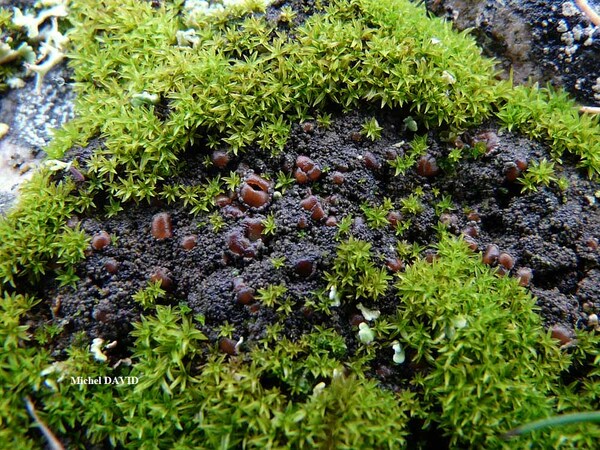
Michel David - Source: http://www.lichensmaritimes.org/index.php?task=fiche&lichen=125&lang=en
France, Pointe de Pen-Hir
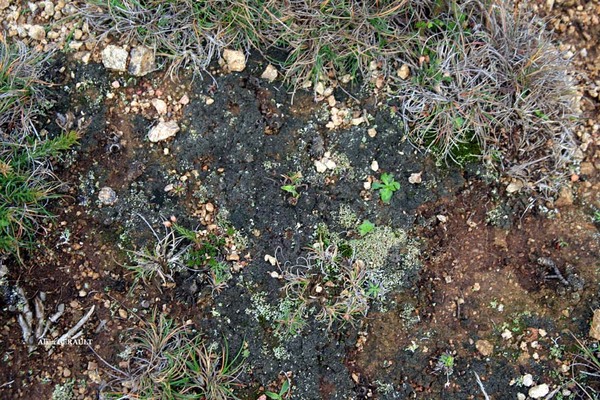
Alain Gerault - Source: http://www.lichensmaritimes.org/index.php?task=fiche&lichen=125&lang=en
France, Pointe du Van
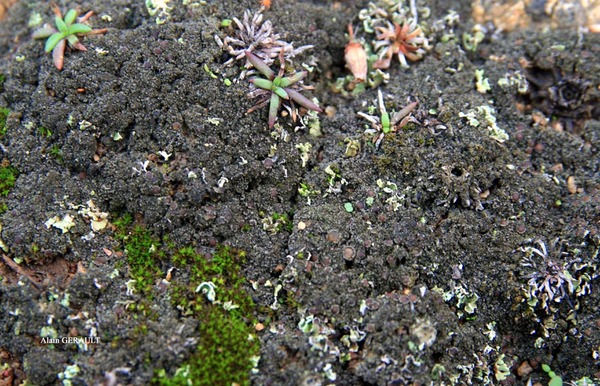
Alain Gerault - Source: http://www.lichensmaritimes.org/index.php?task=fiche&lichen=125&lang=en
France, Pointe du Van
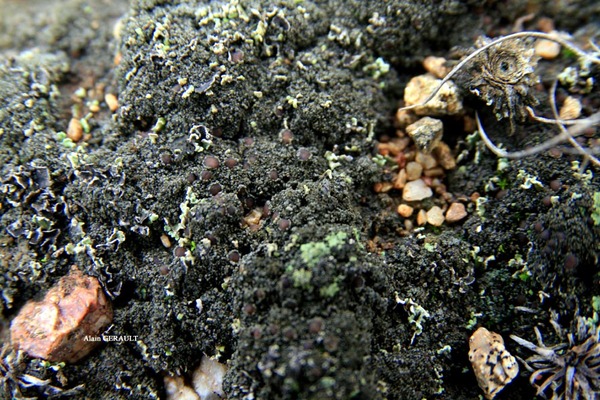
Alain Gerault - Source: http://www.lichensmaritimes.org/index.php?task=fiche&lichen=125&lang=en
France, Pointe du Van
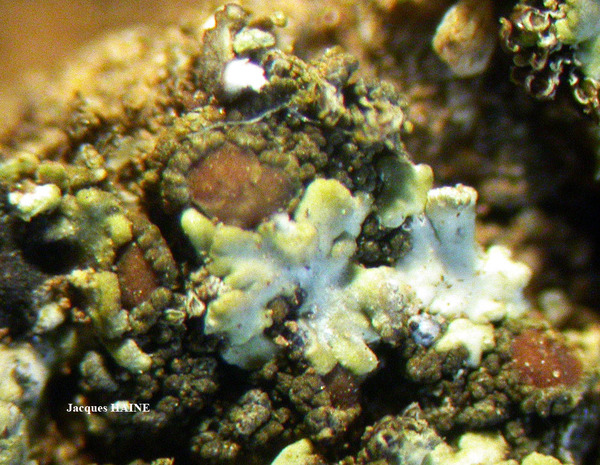
Jacques Haine - Source: http://www.lichensmaritimes.org/index.php?task=fiche&lichen=125&lang=en
France, Pointe du Van

Jacques Haine - Source: http://www.lichensmaritimes.org/index.php?task=fiche&lichen=125&lang=en
France, Pointe du Van
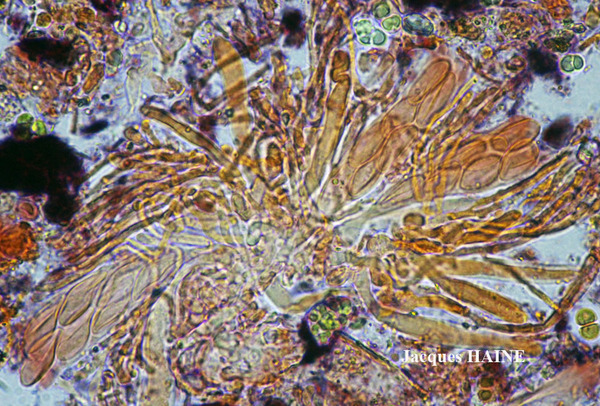
Jacques Haine - Source: http://www.lichensmaritimes.org/index.php?task=fiche&lichen=125&lang=en
France, Pointe du Van
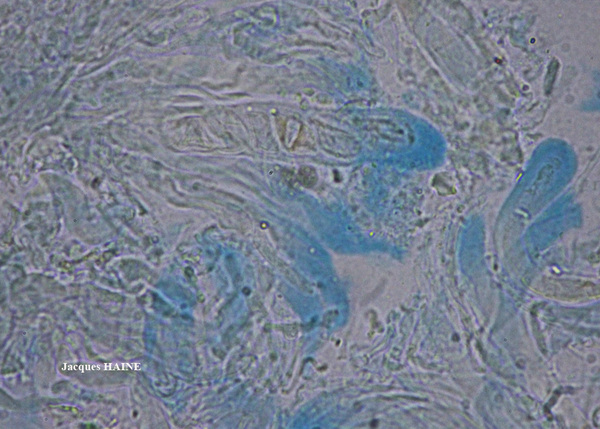
Jacques Haine - Source: http://www.lichensmaritimes.org/index.php?task=fiche&lichen=125&lang=en
France, Pointe du Van
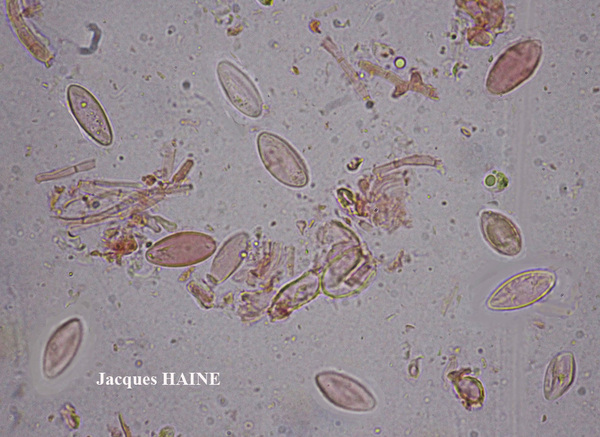
Jacques Haine - Source: http://www.lichensmaritimes.org/index.php?task=fiche&lichen=125&lang=en
France, Pointe du Van
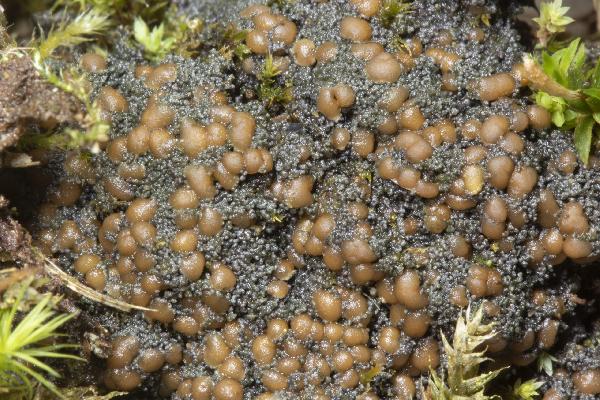
Marta González Garcia - Centro de Estudios Micologicos Asturianos
Spain, Páramo (Teverga-Asturias), 27-XII-2022, sobre musgos y tierra.
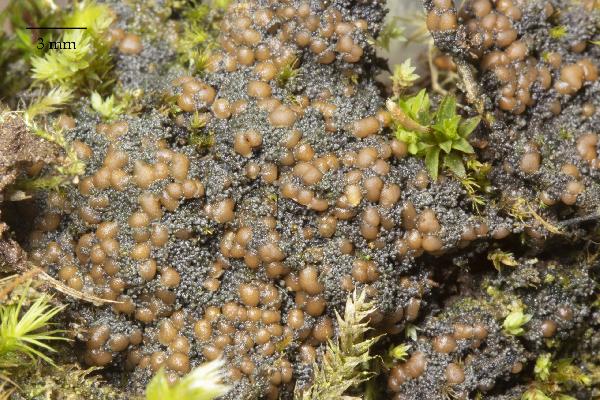
Marta González Garcia - Centro de Estudios Micologicos Asturianos
Spain, Páramo (Teverga-Asturias), 27-XII-2022, sobre musgos y tierra.

Marta González Garcia - Centro de Estudios Micologicos Asturianos
Spain, Páramo (Teverga-Asturias), 27-XII-2022, sobre musgos y tierra.
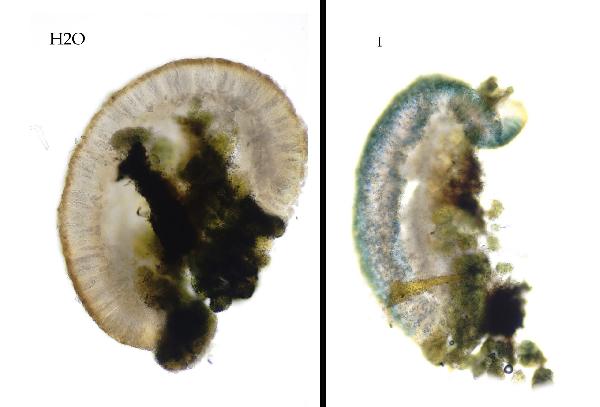
Marta González Garcia - Centro de Estudios Micologicos Asturianos
Spain, Páramo (Teverga-Asturias), 27-XII-2022, sobre musgos y tierra.

Marta González Garcia - Centro de Estudios Micologicos Asturianos
Spain, Páramo (Teverga-Asturias), 27-XII-2022, sobre musgos y tierra.
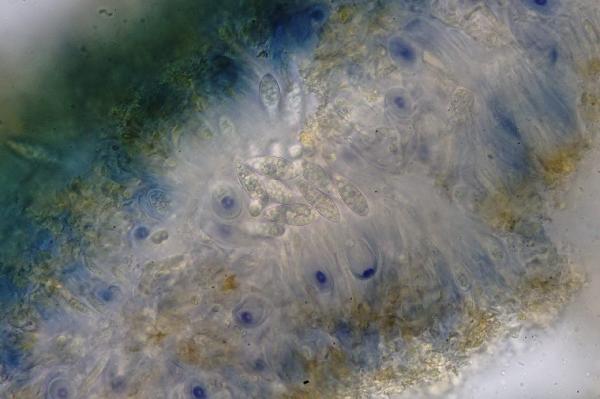
Marta González Garcia - Centro de Estudios Micologicos Asturianos
Spain, Páramo (Teverga-Asturias), 27-XII-2022, sobre musgos y tierra.
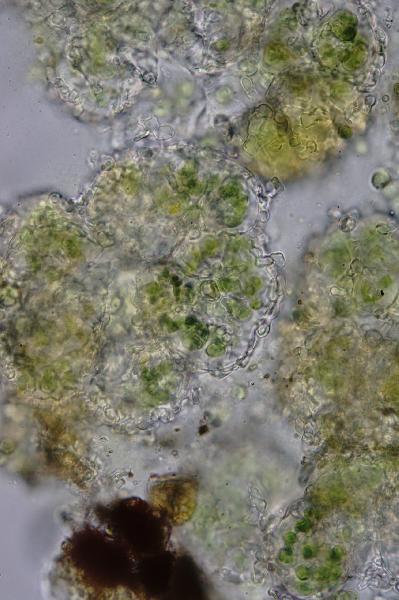
Marta González Garcia - Centro de Estudios Micologicos Asturianos
Spain, Páramo (Teverga-Asturias), 27-XII-2022, sobre musgos y tierra.
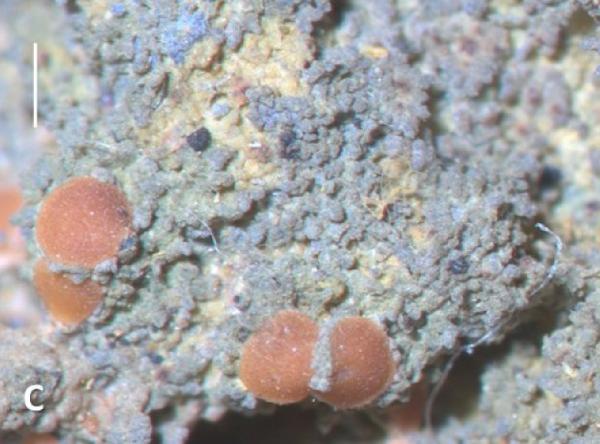
Source: Printzen, C., Cezanne, R., Eichler, M., Jørgensen, P.M. & Teuber, D. 2018. An unusual record of Vahliella atlantica from Central Europe. Graphis Scripta 30 (6): 88–93. Oslo. ISSN 2002-4495. - CC BY-4.0
Moelleropsis nebulosa, Arnold, Lich. exs. 1032b (FR-0047576). Scale bar = 0.5 mm.
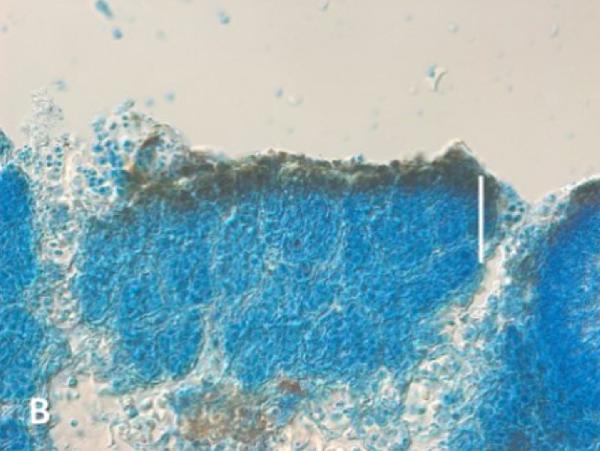
Source: Printzen, C., Cezanne, R., Eichler, M., Jørgensen, P.M. & Teuber, D. 2018. An unusual record of Vahliella atlantica from Central Europe. Graphis Scripta 30 (6): 88–93. Oslo. ISSN 2002-4495. - CC BY-4.0
Cross sections of thalli in LCB showing differences in cortex structure: single-layered in Moelleropsis nebulosa. Schöller 165 (FR-0047574). Scale bar = 50 μm
Growth form: Crustose
Substrata: rocks, soil, terricolous mosses, and plant debris
Photobiont: cyanobacteria, filamentous (e.g. Nostoc, Scytonema)
Reproductive strategy: mainly sexual
Most common in areas with a humid-warm climate (e.g. most of Tyrrenian Italy)
Pioneer species
Commonnes-rarity: (info)
Alpine belt: absent
Subalpine belt: extremely rare
Oromediterranean belt: absent
Montane belt: very rare
Submediterranean belt: absent
Padanian area: absent
Humid submediterranean belt: rare
Humid mediterranean belt: absent
Dry mediterranean belt: absent

Predictive model
| Herbarium samples |

Bernard Bouffinier - Source: http://www.lichensmaritimes.org/index.php?task=fiche&lichen=125&lang=en
France, Pointe de Pen-Hir

Bernard Bouffinier - Source: http://www.lichensmaritimes.org/index.php?task=fiche&lichen=125&lang=en
France, Pointe de Pen-Hir

Bernard Bouffinier - Source: http://www.lichensmaritimes.org/index.php?task=fiche&lichen=125&lang=en
France, Pointe de Pen-Hir

Michel David - Source: http://www.lichensmaritimes.org/index.php?task=fiche&lichen=125&lang=en
France, Pointe de Pen-Hir

Michel David - Source: http://www.lichensmaritimes.org/index.php?task=fiche&lichen=125&lang=en
France, Pointe de Pen-Hir

Alain Gerault - Source: http://www.lichensmaritimes.org/index.php?task=fiche&lichen=125&lang=en
France, Pointe du Van

Alain Gerault - Source: http://www.lichensmaritimes.org/index.php?task=fiche&lichen=125&lang=en
France, Pointe du Van

Alain Gerault - Source: http://www.lichensmaritimes.org/index.php?task=fiche&lichen=125&lang=en
France, Pointe du Van

Jacques Haine - Source: http://www.lichensmaritimes.org/index.php?task=fiche&lichen=125&lang=en
France, Pointe du Van

Jacques Haine - Source: http://www.lichensmaritimes.org/index.php?task=fiche&lichen=125&lang=en
France, Pointe du Van

Jacques Haine - Source: http://www.lichensmaritimes.org/index.php?task=fiche&lichen=125&lang=en
France, Pointe du Van

Jacques Haine - Source: http://www.lichensmaritimes.org/index.php?task=fiche&lichen=125&lang=en
France, Pointe du Van

Jacques Haine - Source: http://www.lichensmaritimes.org/index.php?task=fiche&lichen=125&lang=en
France, Pointe du Van

Marta González Garcia - Centro de Estudios Micologicos Asturianos
Spain, Páramo (Teverga-Asturias), 27-XII-2022, sobre musgos y tierra.

Marta González Garcia - Centro de Estudios Micologicos Asturianos
Spain, Páramo (Teverga-Asturias), 27-XII-2022, sobre musgos y tierra.

Marta González Garcia - Centro de Estudios Micologicos Asturianos
Spain, Páramo (Teverga-Asturias), 27-XII-2022, sobre musgos y tierra.

Marta González Garcia - Centro de Estudios Micologicos Asturianos
Spain, Páramo (Teverga-Asturias), 27-XII-2022, sobre musgos y tierra.

Marta González Garcia - Centro de Estudios Micologicos Asturianos
Spain, Páramo (Teverga-Asturias), 27-XII-2022, sobre musgos y tierra.

Marta González Garcia - Centro de Estudios Micologicos Asturianos
Spain, Páramo (Teverga-Asturias), 27-XII-2022, sobre musgos y tierra.

Marta González Garcia - Centro de Estudios Micologicos Asturianos
Spain, Páramo (Teverga-Asturias), 27-XII-2022, sobre musgos y tierra.

Source: Printzen, C., Cezanne, R., Eichler, M., Jørgensen, P.M. & Teuber, D. 2018. An unusual record of Vahliella atlantica from Central Europe. Graphis Scripta 30 (6): 88–93. Oslo. ISSN 2002-4495. - CC BY-4.0
Moelleropsis nebulosa, Arnold, Lich. exs. 1032b (FR-0047576). Scale bar = 0.5 mm.

 INDEX FUNGORUM
INDEX FUNGORUM
 GBIF
GBIF
 DOLICHENS
DOLICHENS
